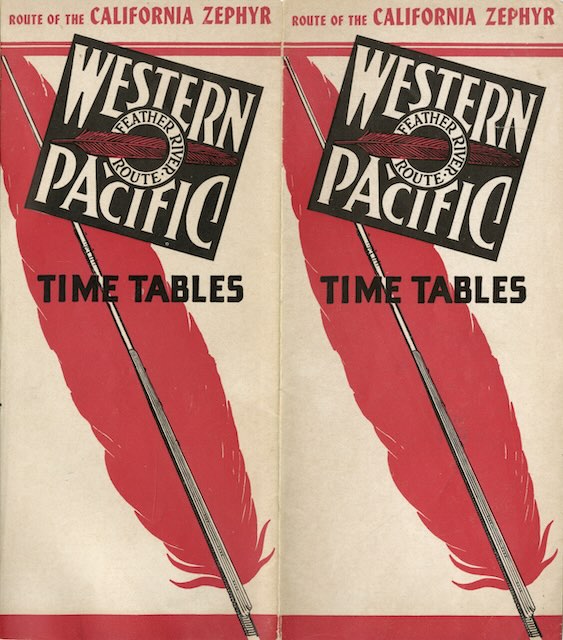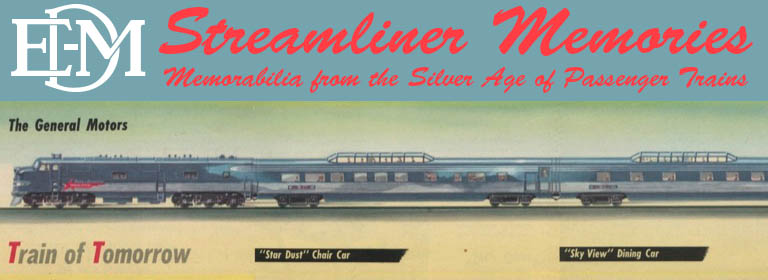The Interstate Commerce Commission responded to Western Pacific’s application to discontinue train 1 & 2, formerly called the Royal Gorge, by allowing the railroad to reduce it from daily to tri-weekly service. To provide this service, the railroad purchased two Rail Diesel Cars from the Budd Company. Although the train kept the numbers, 1 & 2, it was renamed the Zephyrette, which also happened to be the term used to describe the California Zephyr‘s on-board stewardesses.
 Click image to download a 4.3-MB PDF of this 8-page timetable.
Click image to download a 4.3-MB PDF of this 8-page timetable.
RDCs were able to stop and accelerate faster than the steam train they replaced, allowing Western Pacific to cut 40 minutes from the schedule of westbound train 1 and 90 minutes from eastbound train 2. They also cost less than half as much to operate as the steam train. Although they operated only three days a week, two RDCs were needed because their 24-hour schedule didn’t leave enough time to service the car between trips and as scheduled the eastbound and westbound trips heavily overlapped.
Like yesterday’s timetable, this one makes no mention of the train’s consist or on-board services, which included no food service. However, during peak demand periods, the train sometimes included a baggage car and was pulled by an F3 locomotive. One on-line photo shows the train appearing to consist of three F3s (which seems like overkill), a heavyweight coach, and an RDC.

Several thoughts occur with regard to the seemingly overpowered Zephyrette:
1. The RDC had only a 360 or 400m HP engine IIRC, and normally they are MU’d when more than one car is being run. It could be that the RDC did not have enough horsepower to haul a heavyweight coach (approx. 60 tons) and maintain the schedule.
2. The added weight could also strain the RDC’s engine such that a breakdown might occur. The northern Nevada desert isn’t a place you want to be stranded.
3. The train with 3 E units could have been a run to reposition power to where it was needed, or to go back to its home base.